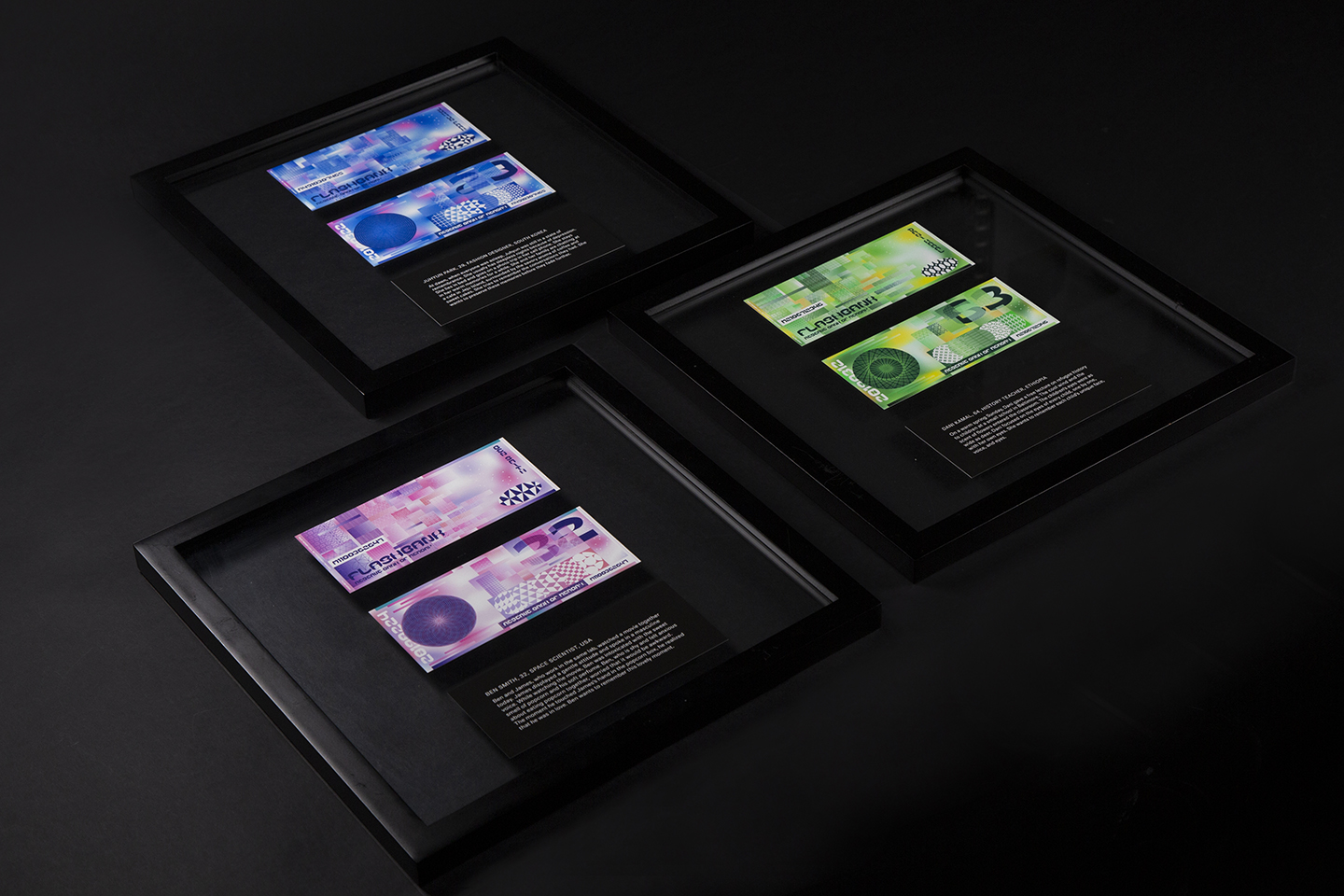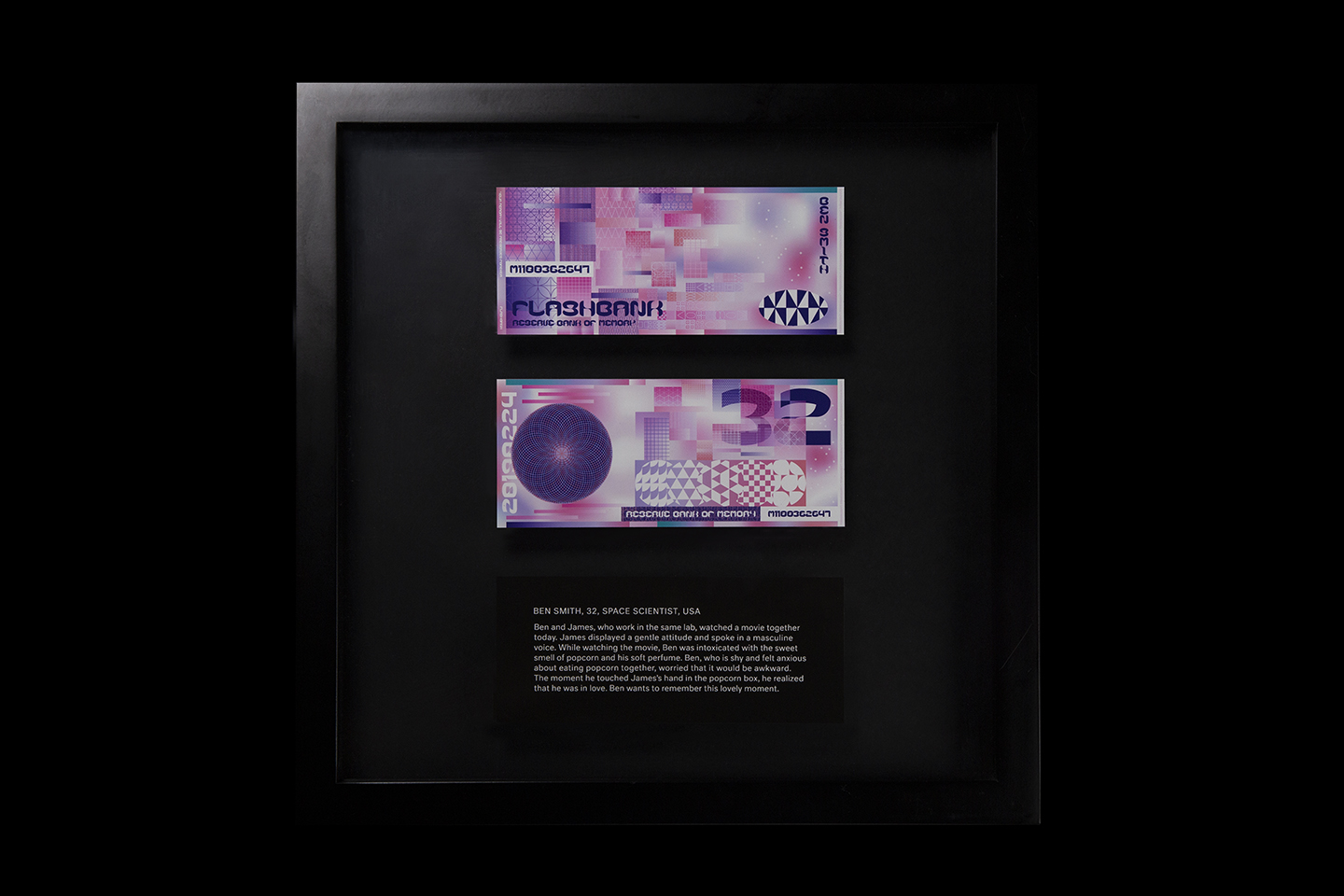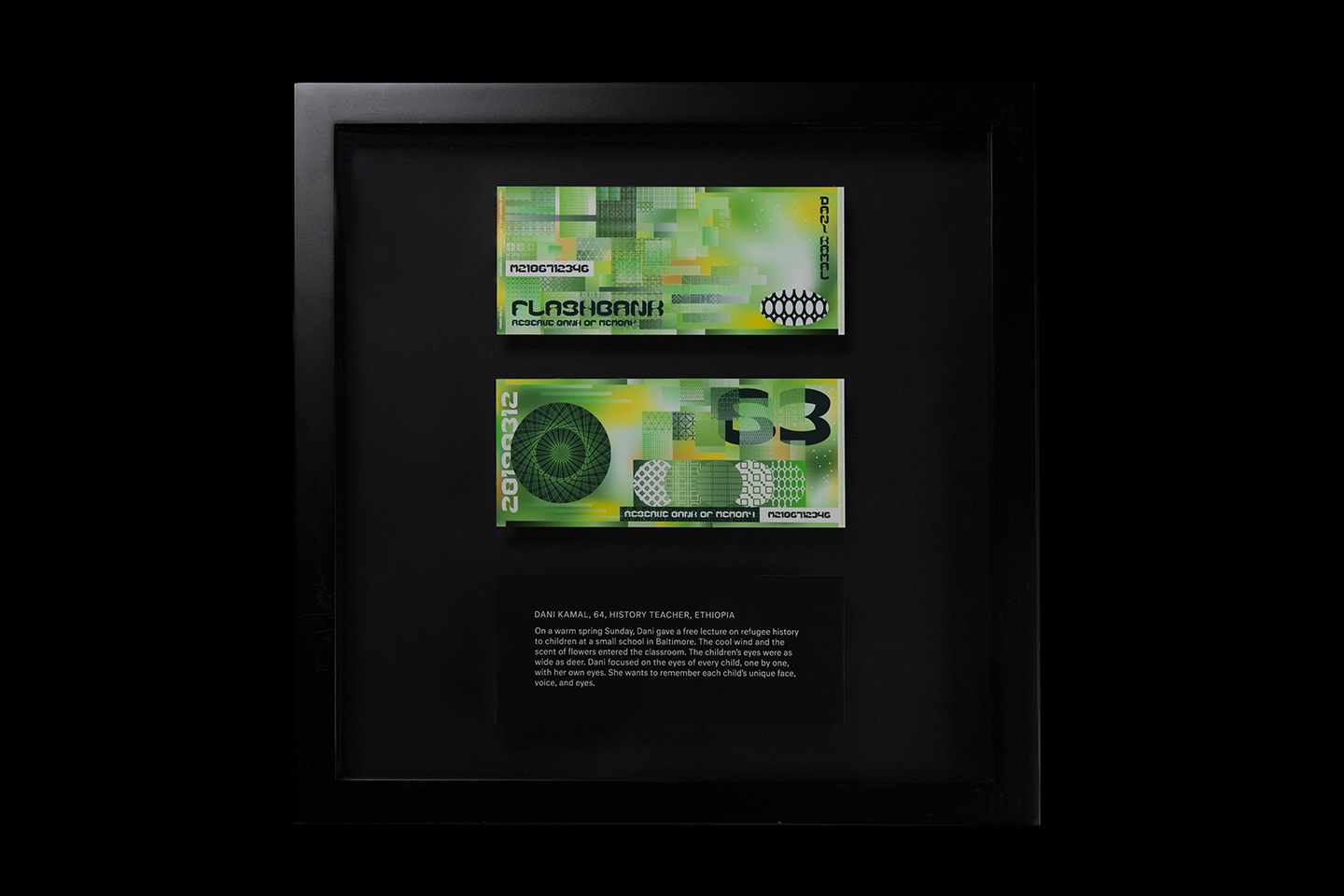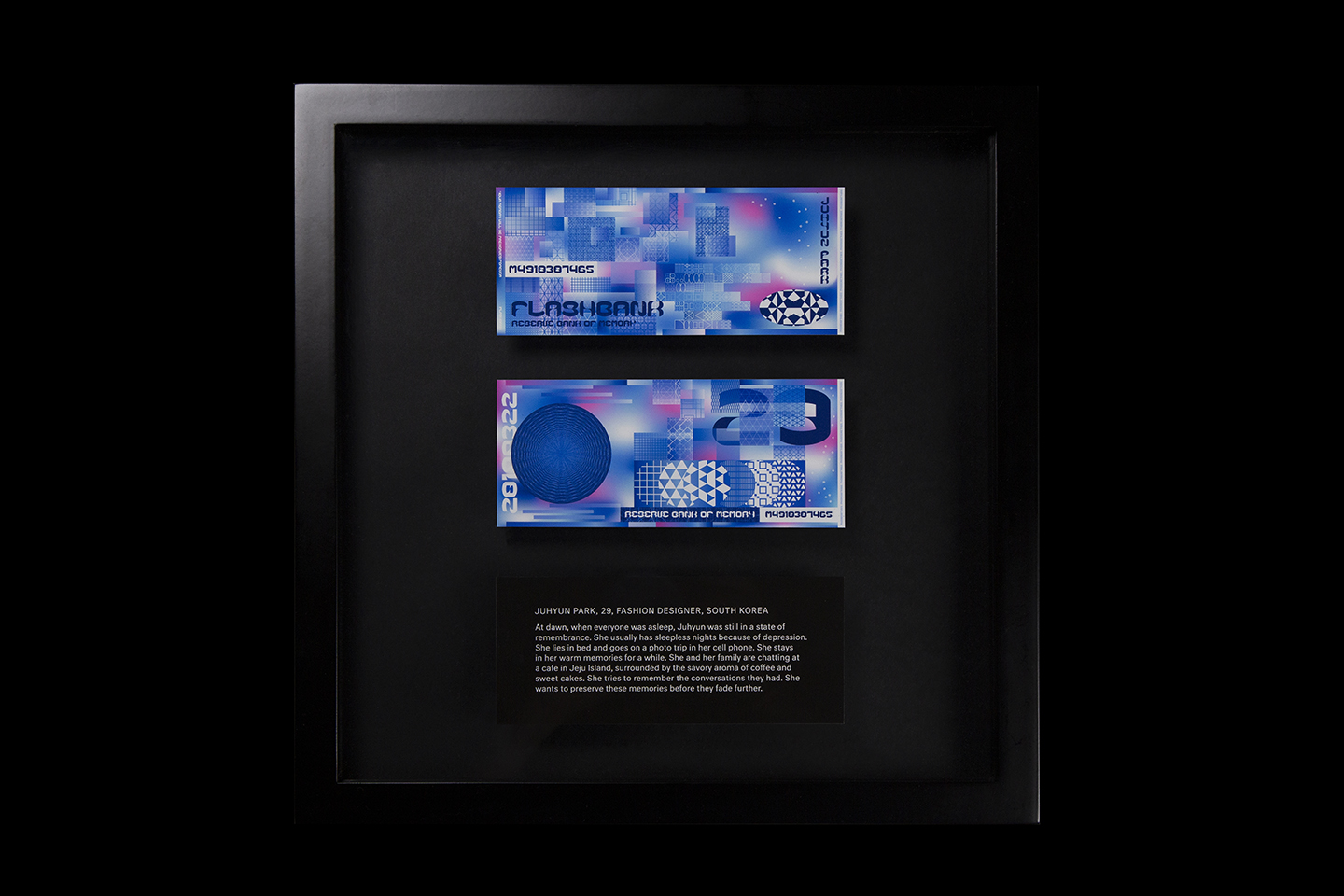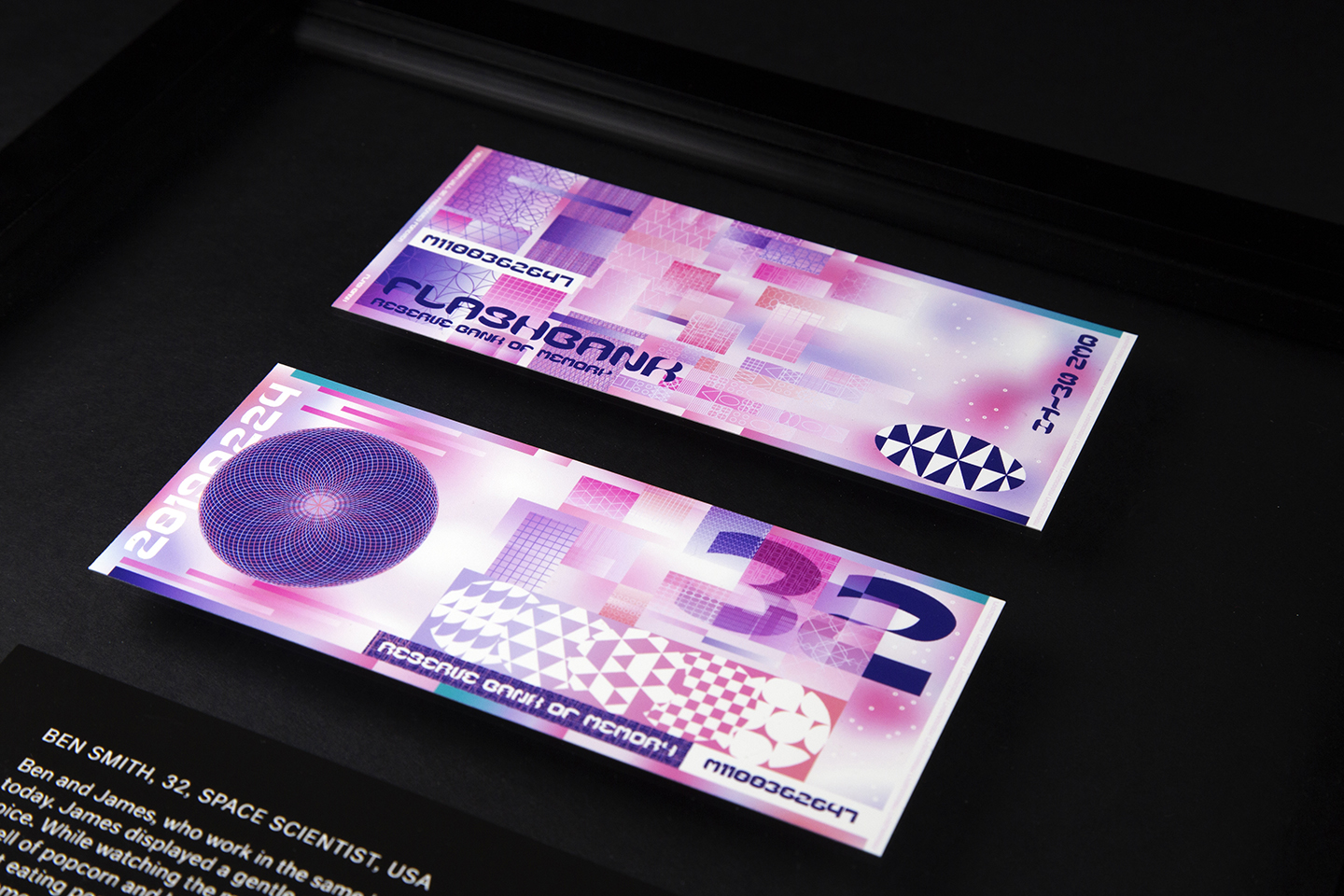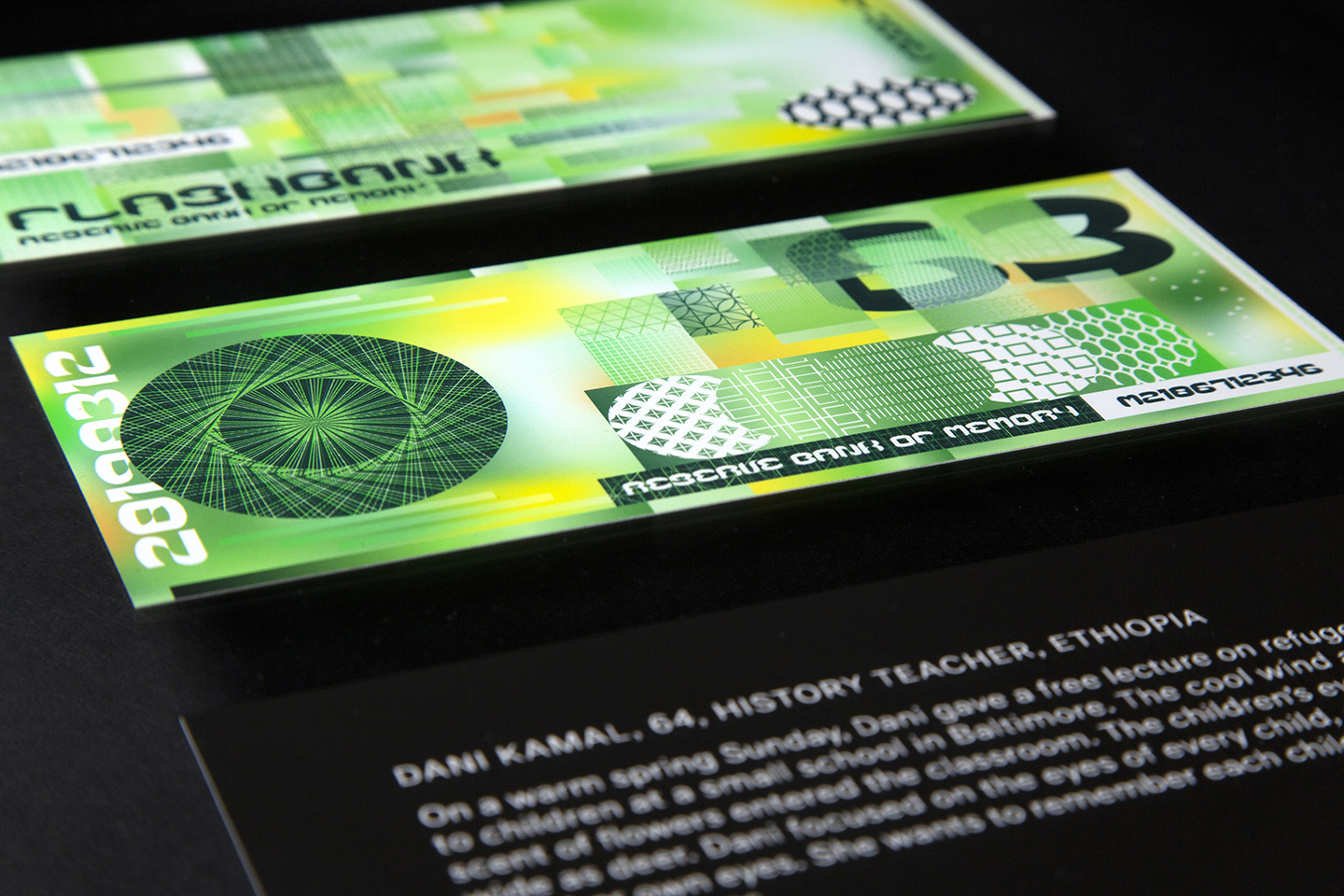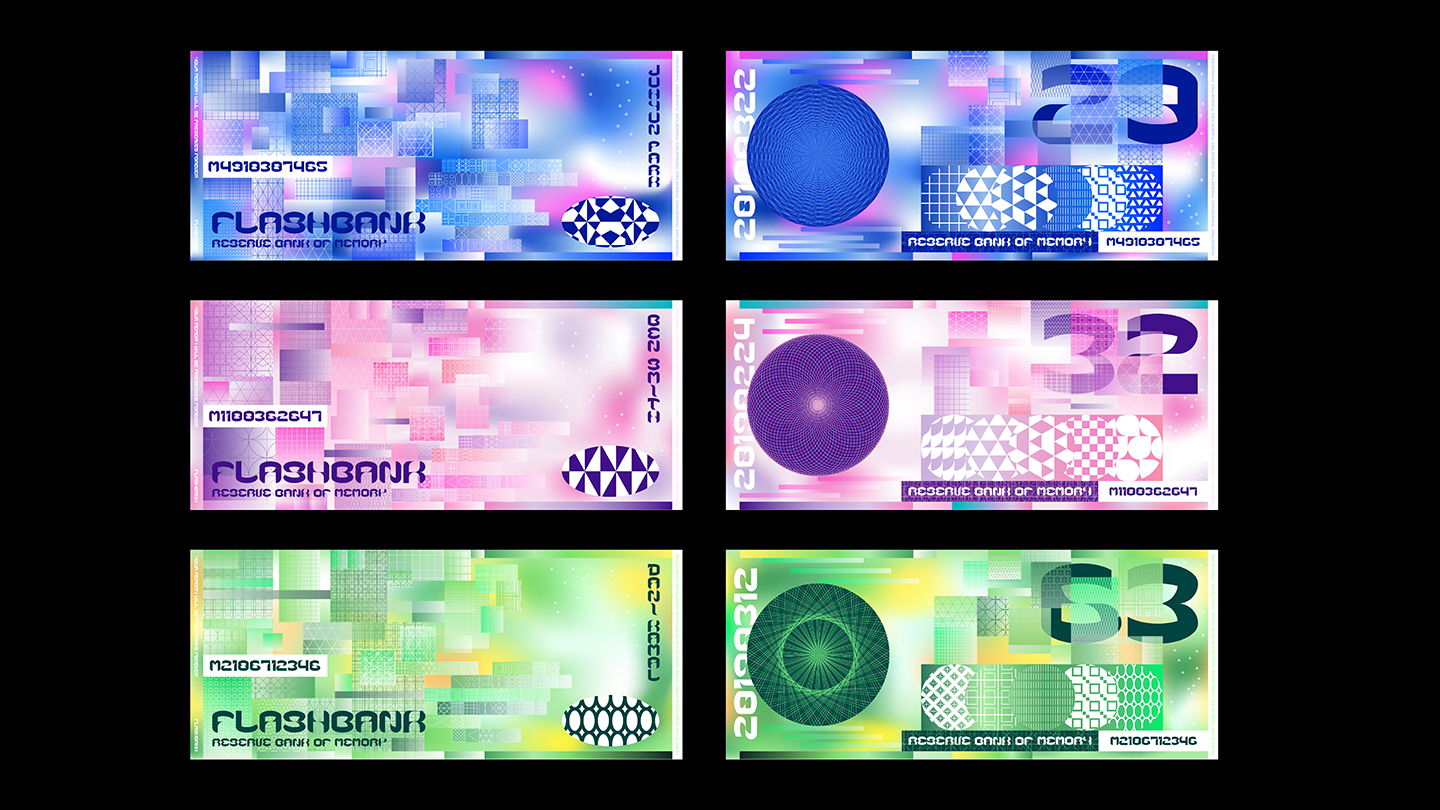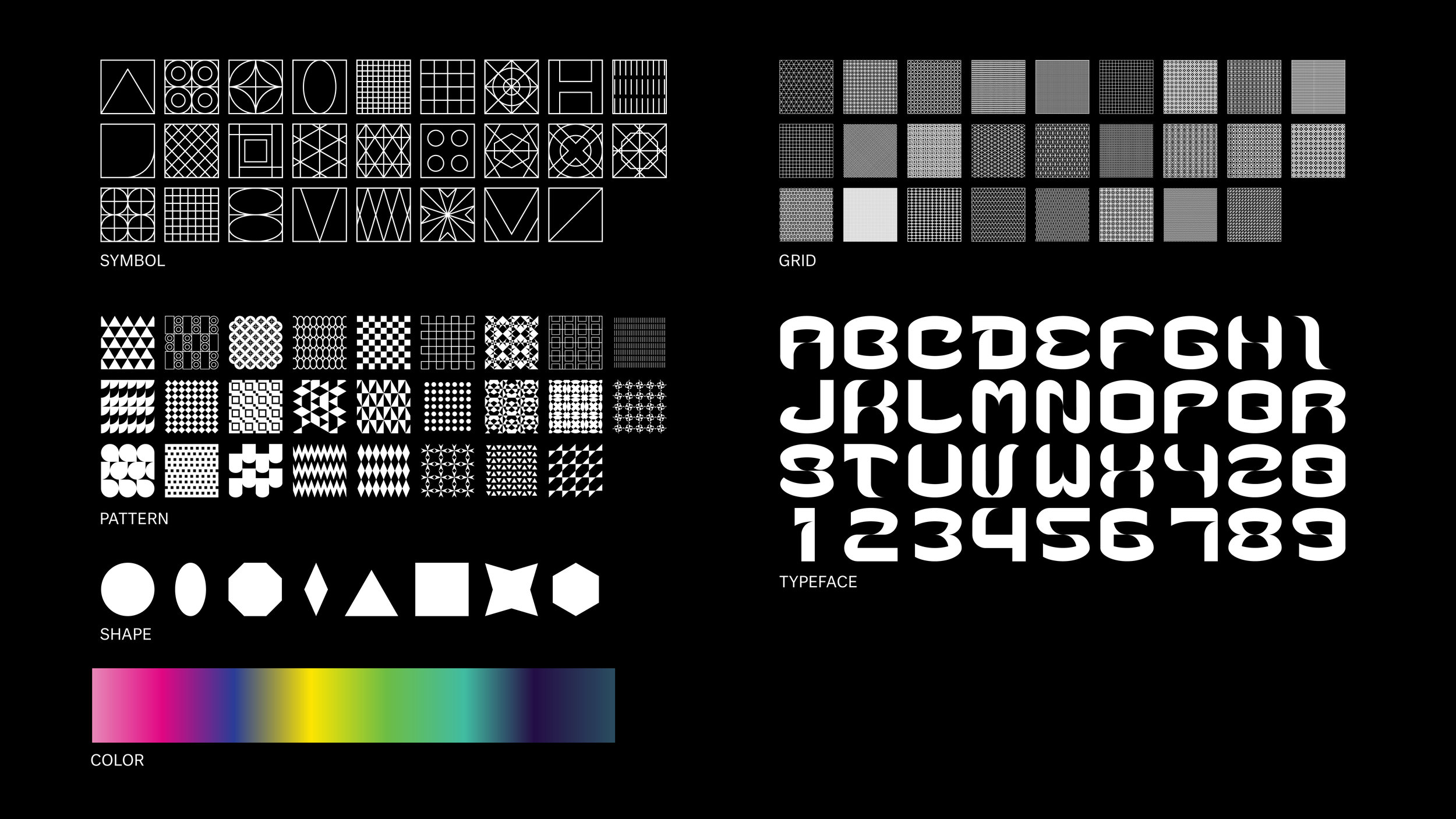FLASHBANK
Jason Chae
My thesis is a speculative design about human memory. I invented a bank that converts human memory into digital language and stores it in currency. The currency contains personal information and memories, which are renewable at any time. I created new digital languages and graphic elements to store memories and identity. The concept speaks to a near future where paper currency is increasingly irrelevant for financial transactions, and where social relationships have rising value.

